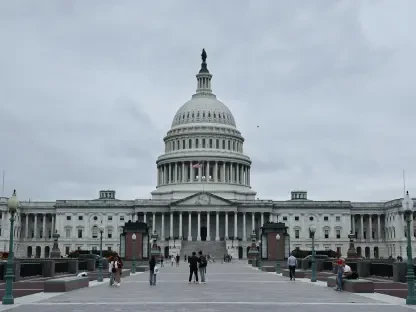Pennsylvania’s labor market remains vibrant amid a national trend of decelerating job growth. Data from the latest report by the Pennsylvania Department of Labor and Industry reveals a buoyant employment landscape in the commonwealth, characterized by a stable unemployment rate, steady job creation, and a host of job opportunities within state agencies. Despite a national economic slowdown, Pennsylvania’s unemployment rate has held steady at 3.4% for nine consecutive months, markedly lower than the U.S. average of 4.3%. This stability demonstrates resilience in the state’s economy, supported by a diverse range of industries and a strong public sector job market.
Stable Unemployment Rate
Pennsylvania’s consistent unemployment rate of 3.4%, which has remained unchanged for nine months, underscores the strength of the state’s economy. This rate not only outperforms the national unemployment rate of 4.3% but also reflects the effectiveness of state policies aimed at maintaining employment stability. The steady unemployment rate is a result of a diverse and robust labor market, supported by sectors such as healthcare, manufacturing, and education. Additionally, strategic initiatives by state agencies have contributed to maintaining low unemployment, providing a cushion against broader economic trends.
One key factor in this stability is the commonwealth’s proactive approach to workforce development. Through various employment programs and partnerships with private industry, the state has been able to create a conducive environment for job retention and growth. Furthermore, the resilience of Pennsylvania’s workforce is evident in the minimal fluctuations in unemployment figures despite national economic pressures. This continuity not only boosts consumer confidence but also encourages investment in local businesses, fostering a cycle of economic health that benefits both employers and employees.
Labor Force and Job Growth
The civilian labor force in Pennsylvania comprises approximately 6.6 million residents who are either employed or actively seeking work. Though there’s a slight decline of about 1,000 from the previous month, the overall size of the workforce remains significant. This minor dip is not unusual and often reflects seasonal trends or short-term economic adjustments, rather than systemic issues. The ability of Pennsylvania to maintain such a robust labor force is indicative of the varied opportunities available across different sectors and the state’s commitment to job creation.
Nonfarm jobs in the state have reached a record high of 6.2 million, with an addition of 12,200 new jobs. This growth is driven by various sectors including technology, healthcare, and public administration, highlighting the state’s ability to generate employment opportunities even in a slowing economy. Pennsylvania’s diverse economic landscape has enabled it to stay resilient, with sectors such as education, logistics, and renewable energy also contributing significantly to job creation. The state’s robust infrastructure and supportive business environment further amplify its capacity to attract and retain talent, fostering a growth-oriented job market.
Job Opportunities in State Agencies
Numerous high-paying job opportunities are available within Pennsylvania’s state agencies, reflecting the strength and growth potential of the public sector. Job roles span various departments, offering competitive salaries, comprehensive benefits, and often remote work options. Positions in agencies like the Pennsylvania Fish and Boat Commission, the Department of Conservation and Natural Resources, and the Department of Human Services offer substantial career opportunities. These roles require a mix of experience and educational qualifications, emphasizing the value placed on skilled professionals.
The availability of such opportunities is a testament to the state’s commitment to maintaining a dynamic and efficient public sector. The diversity of roles within state agencies ensures that there are positions suited for a wide range of skill sets and professional backgrounds. Additionally, these jobs often come with the added benefit of job security, which is particularly important in times of economic uncertainty. The state’s emphasis on filling essential roles that contribute strategically to its operational efficacy underscores its dedication to public service and societal well-being.
Highlighted Job Roles
One notable opportunity is the Marketing Research Analyst (Program Analyst 2) role at the Pennsylvania Fish and Boat Commission, offering a salary range of $58,035 to $88,235. This position involves overseeing market research, data extraction, and the development of marketing initiatives aimed at angler and boater recruitment. Eligibility for this position includes one year of experience as a Program Analyst 1 or two years of analytical experience, along with a bachelor’s degree or equivalent training. The role allows for part-time remote work post-probation, adding flexibility to the work arrangement.
Another significant role is the Forester position within the Pennsylvania Department of Conservation and Natural Resources, offering a salary between $50,836 and $77,321. This job involves rural and community forest program administration, pest management, and fire safety. Candidates need two years of technical forestry experience and a relevant degree or equivalent training. Part-time remote work is an option, enhancing job flexibility and allowing for a better work-life balance. These roles underscore the importance of specialized skills and experience in securing well-paying, stable employment in state agencies.
Remote Work Viability
Pennsylvania’s job market remains robust, despite a nationwide trend of slowing employment growth. The latest report from the Pennsylvania Department of Labor and Industry highlights a lively job scene in the commonwealth, with a consistent unemployment rate, steady job creation, and numerous job openings within state agencies. While the national economy cools, Pennsylvania’s unemployment rate has remained at 3.4% for nine months straight, significantly below the U.S. average of 4.3%. This steadiness showcases the resilience of Pennsylvania’s economy, bolstered by a diverse array of industries and a strong public sector employment market.
Additionally, Pennsylvania’s labor force participation rate has improved, reflecting confidence among job seekers. The state’s key industries like manufacturing, healthcare, and education continue to offer plentiful opportunities, ensuring sustained economic growth. Furthermore, state-initiated employment programs have successfully matched skillsets to available jobs, aiding in maintaining this stable outlook. Overall, Pennsylvania’s economy stands as a beacon of stability amidst broader national economic uncertainties.









